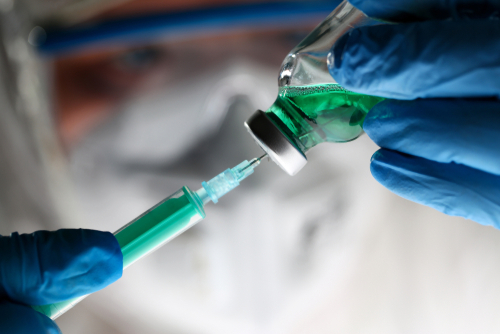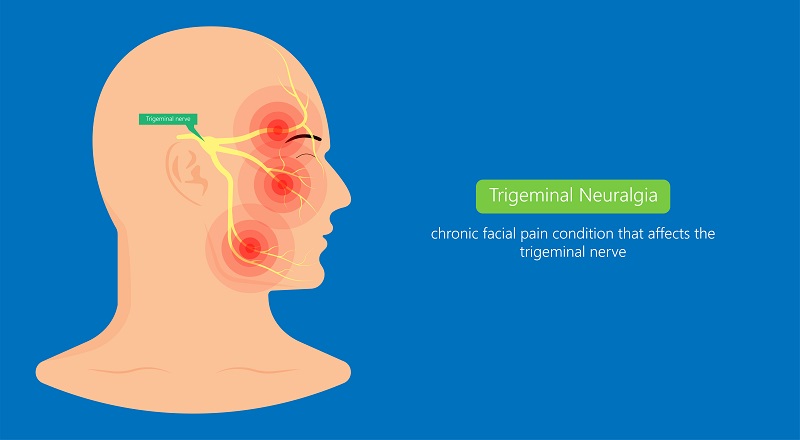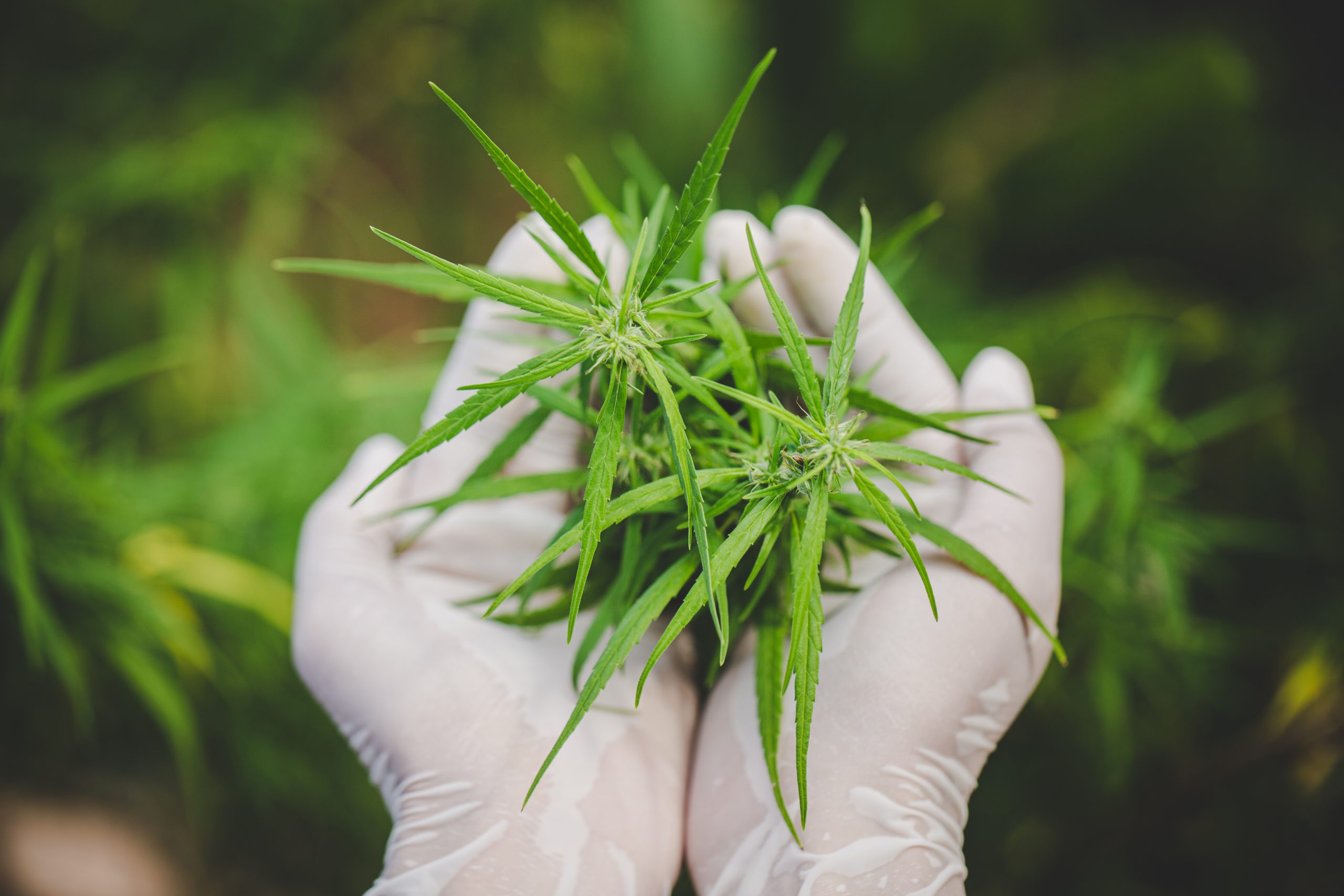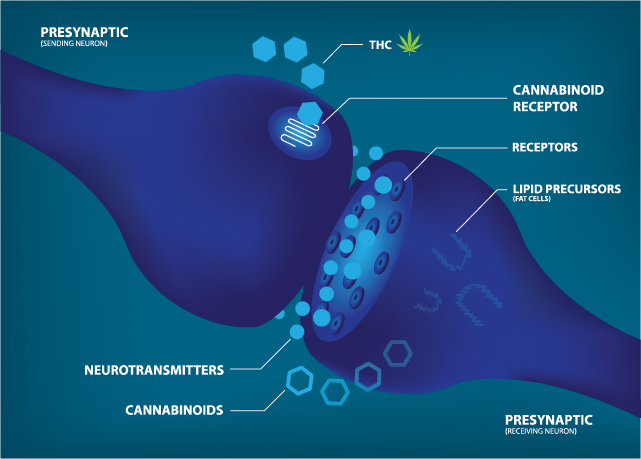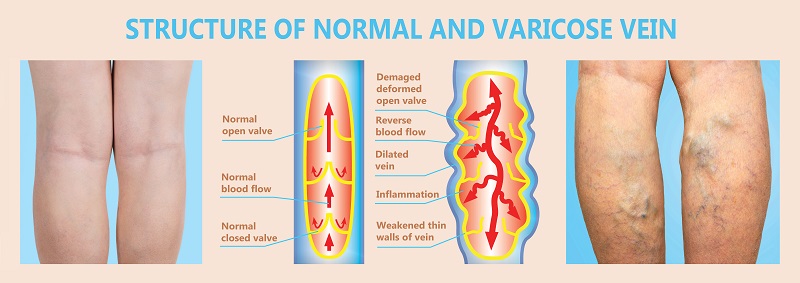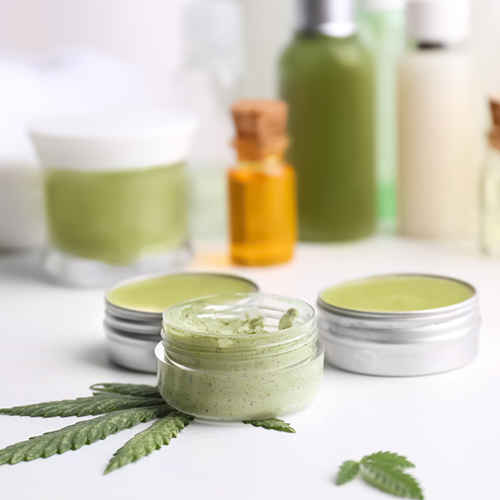Topical CBD Formulations in Sports and Personal Training
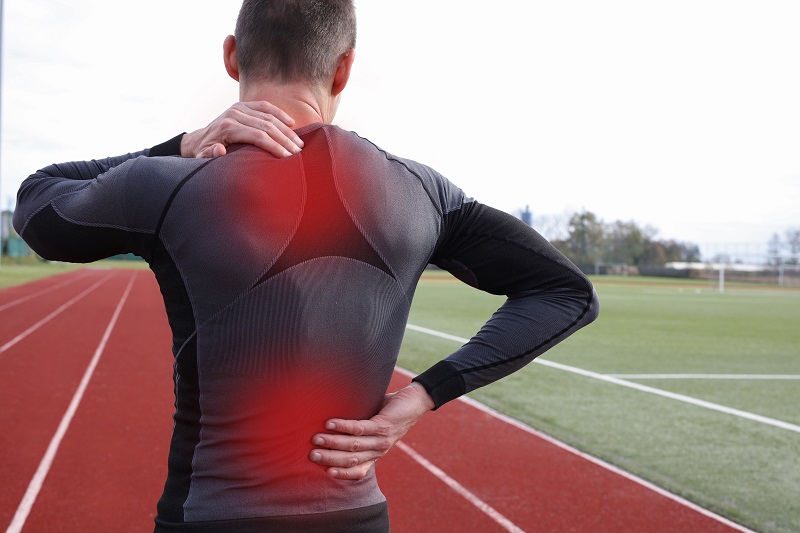
Introduction
One area that has recently gained a lot of attention is the use of CBD in topical creams for relief of muscle and joint pain. Athletes are continuously putting stress on their bodies, not only during competition, but during training as well. Individuals who train with weights and cardio at the gym are also putting regular stress on their bodies. Whether you are an athlete in training or an individual who works out regularly, physical trauma and prolonged wear and tear can lead to injuries and pain.
Although there are many topical formulations that contain ingredients with known analgesic properties for treating minor muscle pain, sometimes these are not enough. Current methods of over-the-counter pain relievers (i.e. NSAIDs like ibuprofen and naproxen sodium) are effective, but they pose serious risks. In July 2015 the FDA strengthened its warning that NSAIDs increase heart attack and stroke risk. (1)
Why CBD?
Along with the risks associated with typical over-the-counter pain relief, the reliance on opioid-based medication for acute pain is leading to addiction and overdoses. At one time, opioids were prescribed mainly for short-term uses such as pain relief after surgery or for people with advanced cancer or other terminal conditions. For reasons that won’t be discussed in this article, the prescription of opioids for pain became more widespread in Canada and the USA over the last 20 years to the point where it has become known as the “opioid epidemic”.
In the USA alone the number of deaths from prescription opioids (eg. oxycodone, hydrocodone) totaled 14,495 in 2017, while Canada reported 10,337 opioid-related deaths between January 2016 and September 2018. (2) (3)The World Health Organization published the “Information Sheet on Opioid Overdose in August, 2018 and reported that roughly 450,000 people died worldwide as a result of drug use in 2015. Of those deaths, about 160 thousands were directly associated with drug use disorders and about 118 thousands with opioid use disorders. (4)
Bearing these facts in mind, it’s clearly time for a new solution for pain relief. With the many studies done on CBD and its anti-inflammatory and analgesic properties it’s not surprising that it has caught the eye of athletes and fitness enthusiasts. But it isn’t just athletes who are looking to CBD, those suffering from arthritic pain, Irritable Bowel Syndrome, Inflammatory Bowel Disorder, Colitis, Crone’s Disease, Multiple Scleroses, Endometriosis, and the list goes on (5), are all curious about and eager to know more about the potential of CBD for pain relief and reduced inflammation without the risks associated with NSAIDs or opioids. The need for effective treatments for recovery of sports related injuries and safer pain relief has people turning to CBD as a potential solution.
Legal Issues
CBD is legal in any country where medical cannabis or medical and recreational cannabis is legal. In the USA pure CBD (CBD isolate) is legal. However, marijuana is not legal in all states. In the world of sports some significant steps have been taken regarding CBD. At the beginning of 2018, the World Anti-Doping Agency (WADA) removed CBD from the list of prohibited substances – in or out of competition. The US Anti-Doping Agency (USADA) did the same.
In December 2019 Major League Baseball removed marijuana from its list of drugs of abuse. Instead their focus will be on testing for opioids, fentanyl, cocaine and synthetic THC. A key initiative in this move is to address the number of players using opioids to deal with their injuries. Opioid misuse has grown to a “crisis” in the United States, according to the National Institutes of Health, with roughly 1.2 million people over the age of 12 estimated to have an opioid use disorder. Even the President’s office appears to support this initiative based on a statement made by Kellyanne Conway, a senior counselor to U.S. President Donald Trump, who praised the updated policy in a written statement.
“We commend Major League Baseball and the MLB Players Association for promoting treatment and recovery for those suffering from the disease of addiction and opioid misuse” (6)
The trend towards CBD as a viable option for pain relief appears to be gaining momentum. As research continues on how CBD helps with pain and inflammation it is becoming clear that the results of the research speak for themselves.
What Does Science Tell Us?
CBD and the Endocannabinoid System
A detailed discussion on the Endocannabinoid System (ECS) and how it works can be read in a previous article on this site titled “What is CBD?” The following is a review only.
Within your nervous system, the two main endocannabinoids, anandamide (AEA) and 2-arachidonoylglyerol (2-AG) are produced in postsynaptic neurons (downstream) and released into the synapse where they bind to CB1 and CB2 receptors on the presynaptic neuron (upstream). They act to inhibit or reduce the release of certain neurotransmitters.
CB1 and CB2 receptors can be found in every part of the human body. The greatest concentration of CB1 receptors are found in the brain and spinal cord, while CB2 receptors are found in immune system tissues, with the highest concentration being in the skin. CBD binding to CB1 receptors has a greater effect on the central nervous system, and CBD binding to CB2 receptors has a greater effect on reducing inflammation.
The primary purpose of the ECS appears to be maintaining homeostasis, which it does by keeping neurotransmitter levels in check. Consuming CBD could be thought of as supplementing or increasing the activity of your body’s existing endocannabinoid system. When competing in sports, training for competition or just working out, you apply greater stress to your body than you would in your daily life, leading to pain and inflammation. Adding exogenous CBD can help address the inflamed tissue and ease the pain by interacting with the ECS to help maintain homeostasis in your body.
What we absolutely know for a fact is that CBD has been shown to have a powerful effect on reducing inflammation in the skin and in other parts of the body. Although many tests have been conducted using orally administered CBD recent studies suggests that the benefits of topical application may have greater benefits than orally administered trials. In addition, research has shown that CBD can help with a wide range of pain related issues, whether it is administered on its own or with THC. The results from these studies are encouraging. (8) (9)
Urgent Need for Clinical Studies
One of the biggest problems that exist in the area of scientific research and CBD is that more clinical studies on humans need to be conducted to verify the anecdotal evidence that is emerging from the general public. Consumers are demanding products with CBD regardless of what scientific research has discovered. It’s an interesting scenario where the market is working to satisfy the consumer demand resulting in people using the products available and reporting various degrees of success. The outcome will be that consumers begin reporting results of using CBD based on their personal experience before science has had a chance to conduct proper clinical studies.
There are advantages to this situation. Obtaining permission to conduct studies on humans is difficult and can be expensive. Although much of the data collected will be anecdotal, it will still provide a significant basis of results that will either advance further scientific research or refute the need for further research.
A good example of this is a survey which was recently conducted by the Arthritis Foundation. The survey results indicated that those who participated in the survey and were currently using CBD did so to treat the symptoms of arthritis, primarily pain. A variety of other benefits beyond the treatment of pain were also reported. These included better sleep, improved physical function and a better overall sense of well being. While this information is anecdotal, the large percentage of respondents who made these claims suggests there is validity to it. (7)
The Benefits of CBD in your Workout and Training
Relieve Pain
If you participate in professional or amateur sports you have likely suffered some form of injury. Or perhaps you like to keep fit lifting weights and did one too many reps or lifted more than you should and now you have to deal with the pain of a torn muscle. Or maybe you simply have sore aching muscles from over exerting yourself doing yard work. Depending on the severity of the injury you may need to take some kind of pain reliever to manage the pain you are in.
Relief from a painful injury is probably the main benefit you can get from using a topical formulation infused with CBD. However, it doesn’t need to be used only when you have an injury. Pain Relief CBD spray before and after your activity can help to relieve sore and stiff muscles. As mentioned previously, studies have shown that CBD is effective for reducing pain including musculoskeletal pain from exercise, as well as stiff joints. (10) However, this is still an area where anecdotal evidence and biological plausibility are the best we have until research catches up.
Alternative to NSAIDs and Opioids
Athletes have been consuming over-the-counter non-steroidal anti-inflammatory drugs (NSAIDs) like ibuprofen (Advil) and naproxen sodium (Aleve) for decades, but as previously mentioned, they may not be as safe as we once thought. Endurance athletes, in particular, are typically advised to avoid NSAIDs during long training sessions and events, due to increased risk of renal damage. But even if your workouts and events are short, long-term or frequent use of NSAIDs may increase your risk for heart attack and stroke.
The opioid epidemic is real, at least in the USA and Canada. Athletes who suffer serious injury will typically be prescribed an opioid-based medication for relief from pain. But as mentioned earlier, these medications carry a significant risk of addiction and death by overdose. Cannabinoids may not as effective as opioids for relieving acute, high-intensity pain, but as research evolves we may discover new ways to modify the ECS with CBD and a more effective way to manage acute pain. But CBD may be a better choice for long-term pain management – either alone or in conjunction with other medications – with the benefit being far less risk of dependence or accidental death.
How to use CBD
New CBD-integrated products hit the market every week. You can ingest CBD through capsules, pills, or in oil or tincture form. You can inhale it as a vapor. It has been infused into sports drinks, recovery drinks, and all manner of edibles. But as mentioned at the beginning of this article, it is the topical creams, sprays and lotions are getting the attention of athletes.
Despite the lack of hard evidence, CBD does appear to relieve pain effectively. If you are looking for something that can help sooth sore muscles and reduce inflammation, a topical formulation such Pain Relief CBD Cream may be an ideal choice. Or, if you want to avoid getting it on your hands before a workout, try a Pain Relief CBD Spray or Pain Relief CBD Roll-on instead. These products use a blend of active ingredients menthol and methyl salicylate with natural ingredients magnesium and CBD.
Conclusion
The emergence of cannabidiol could mark a major turning point in how athletes recover from training stress and manage both occasional and chronic pain. The giant, glaring caveat is that right now the use of CBD and the ways it’s being delivered are ahead of the science. The good news is, numerous clinical studies are underway. Last year a major Canadian marijuana company partnered with the UFC organization to conduct clinical research on UFC athletes to understand how hemp derived CBD can be used to assist in athlete wellness and recovery. The outcome of this research could be a big step towards validating the anecdotal reports that are floating around the internet.
For those unfamiliar with the UFC, it stands for Ultimate Fighting Championship. The sport is basically a contest of mixed martial arts fighting styles. Matches are usually brutal and injuries are common. Dana White, UFC president had this to say about the research: “White said. “When you think about this the amount of money that’s going to go into the testing and the research of this deal is going to affect our athletes, then it’s going to spill into the NFL, the NBA and soccer. And eventually into just regular people like us that workout every day or deal with chronic pain.” (11)
With what we know at this point, CBD offers good potential benefits and few risks. If it improves recovery as a pain reliever, anti-inflammatory, and sleep aid, then it has great potential to improve athletic performance. And if it gets athletes to reduce consumption of NSAIDS, opioids, and prescription sleep aids, those are even bigger victories.
Articles Referenced
(2) https://www.kff.org/other/state-indicator/opioid-overdose-deaths-by-type-of-opioid/
(3) https://www.nature.com/articles/d41586-019-02686-2
(4) https://www.who.int/substance_abuse/information-sheet/en/
(5) https://www.projectcbd.org/cbd-for/can-cbd-help-me
(8) https://www.ncbi.nlm.nih.gov/pmc/articles/PMC4151231/
(9) https://www.sciencedirect.com/science/article/pii/S0168365903004152
(10) https://www.ncbi.nlm.nih.gov/pmc/articles/PMC2430692/
(11) https://www.ufc.com/news/ufc-aurora-cannabis-aim-innovate
More articles:


